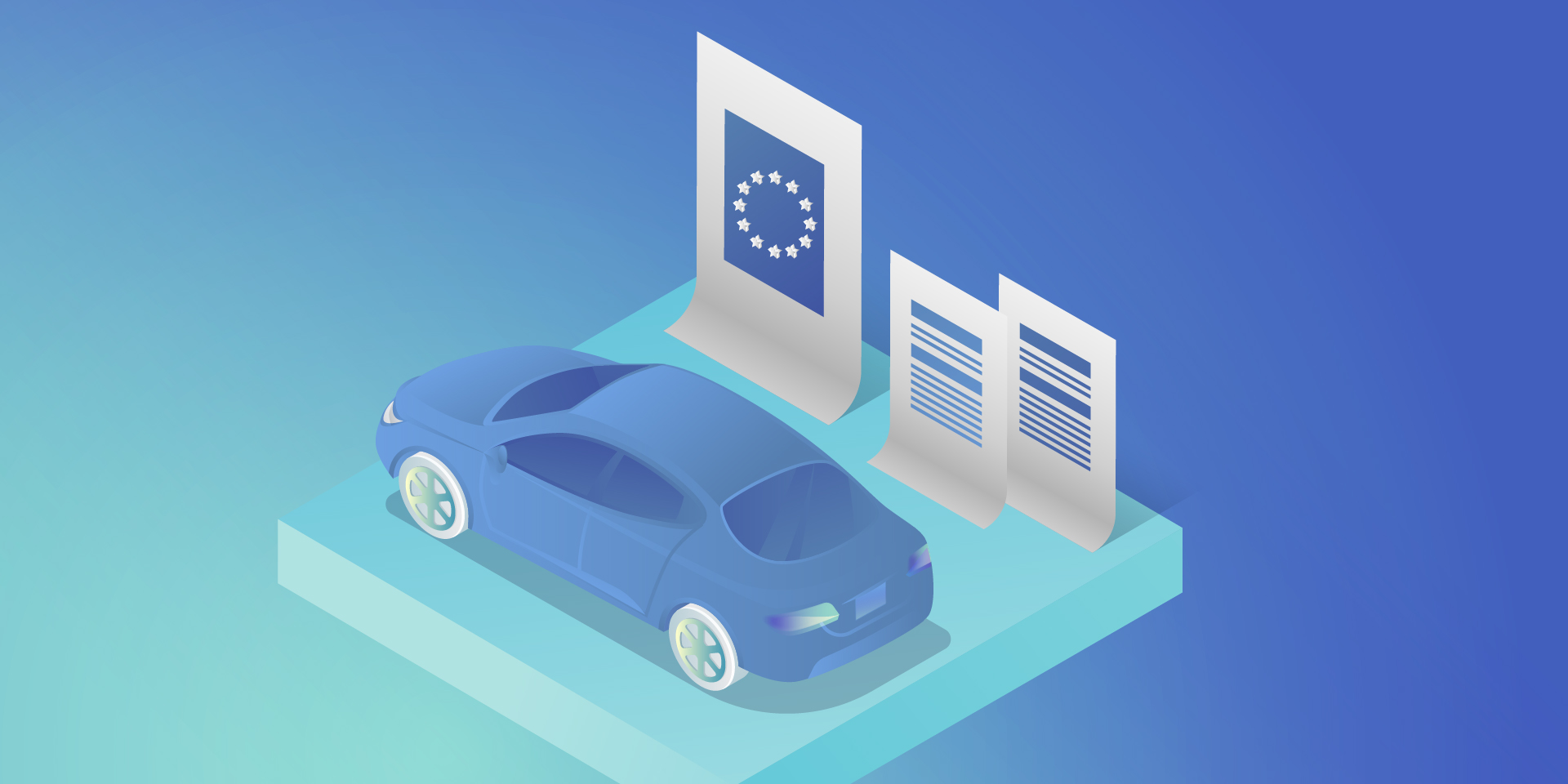EU Data Regulations Decoded: Expert Solutions for IoT Compliance and Growth

IoT manufacturers are continuously advancing the potential of connected devices. By 2025, the global expansion of IoT is projected to generate nearly 80 zettabytes of data annually (1), highlighting the immense scale and complexity of managing this volume.
However, with innovation comes the challenge of navigating Europe’s regulatory landscape.
Three key EU data regulations – the Data Governance Act (DGA) (2), the EU Data Act (3), and the General Data Protection Regulation (GDPR) (4) – outline how businesses must handle, share, and protect both personal and non-personal data.
This article explains how these regulations work together and how IoT manufacturers can comply while opening new business opportunities within this legal framework.
Explaining the EU Data Act
The EU Data Act, set to be fully implemented in 2025, seeks to ensure fairness and transparency in the data economy. It gives users and businesses the right to access and control data generated by IoT devices, promoting innovation and fair competition.
- User control over data: The EU Data Act allows users (and businesses) to authorize the sharing of their device-generated data with third-party service providers. This requires IoT manufacturers to build systems that enable users to easily request and manage access to their data.
- Mandatory data sharing: In certain cases, IoT manufacturers will be required to share data with other businesses when authorized by the user. For example, third-party service providers may need access to this data. In B2B scenarios, manufacturers can request reasonable compensation for providing the data.
This regulation is particularly relevant in industries like automotive and smart cities, where multiple stakeholders rely on shared data. A connected car manufacturer, for instance, must ensure users can authorize access to their vehicle data for services like maintenance or insurance.
Introduction to the Data Governance Act
The DGA, effective since September 2023, is all about creating a trustworthy, neutral data-sharing system. It focuses on two key areas: data intermediation services and data altruism.
- Access to public sector data: The DGA allows businesses to reuse data from public sector bodies, such as healthcare, transportation, and environmental data. This provides access to high-quality data that can be used to develop new products, services, and innovations.
Example: A company developing AI-based healthcare solutions can use anonymized public health data to create more accurate models or treatments.
- Data intermediation services: Intermediaries are neutral third parties that help exchange data between IoT manufacturers and other data users (like third-party service providers) under B2B, C2B, and data cooperative models.
The idea emerged as an alternative to big tech platforms monopolizing data-sharing. The goal? To provide a secure and transparent space where personal and non-personal data can be shared safely.
Example: A smart home manufacturer might team up with a data intermediary to help users share energy data with utility companies or researchers looking into energy efficiency.
Manufacturers cannot act as intermediaries directly, but they can partner with or establish separate entities to manage data exchanges. If they create these intermediaries, the entities must function independently from the core business. This separation ensures data is handled fairly and transparently without commercial bias.
The goal is to build trust – intermediaries are only there to facilitate secure, neutral connections between data holders and users without using the data for their own benefit.
- Data altruism: This is all about voluntary data sharing for the public good. Think research or environmental projects. IoT manufacturers can give users the option to donate their data, opening the door to collaborations with research bodies or public organizations.
The DGA’s core focus is building user trust by ensuring data transparency, security, and fairness, whether through neutral intermediaries or data shared for a greater cause.
Key GDPR rules every business should know
The GDPR, in effect since 2018, sets strict rules for how businesses collect, store, and process personal data, including data from IoT devices.
- User consent and transparency: IoT manufacturers must obtain explicit user consent before collecting or processing personal data, such as health data from wearable devices or location data from connected cars. Transparency about how this data is used is also required.
- Data security and privacy: Manufacturers must implement robust security measures to protect personal data and adhere to data minimization principles – only collecting what’s necessary. Additionally, they must uphold user rights, such as providing access to their data, supporting data portability, and allowing users to request erasure (the right to be forgotten).
For example, wearable device manufacturers need to ensure the security of personal data and offer users the ability to request the deletion of their data if they no longer wish for it to be stored.
How the DGA, EU Data Act, and GDPR work together
These three EU data regulations create a well-rounded framework for managing both personal and non-personal data in the IoT space.
- The DGA: The Data Governance Act creates neutral, secure data-sharing ecosystems, promoting transparency and fairness when multiple parties exchange data through trusted intermediaries.
- The EU Data Act: This regulation complements the DGA by giving users control over the data generated by their devices, allowing them to request that it be shared with third-party service providers. In certain B2B cases, the data holder may request fair compensation for providing access to the data.
- The GDPR: The GDPR adds strong protections for personal data. When personal information is involved, it ensures that users’ privacy and rights are respected.
Example:
Imagine a smart agriculture company that manufactures sensors to monitor soil and weather conditions.
Under the DGA, the company can work with neutral intermediaries to securely share aggregated environmental data with researchers studying climate change, maintaining transparency and fairness in the exchange.
At the same time, the EU Data Act allows farmers who use these sensors to maintain control over their data and request that it be shared with third-party services like equipment manufacturers or crop analytics firms. In certain B2B cases, the smart agriculture company can ask for fair compensation for sharing aggregated data insights.
If personal data is involved - such as specific information about a farm or farmer - the GDPR governs how this data is processed and shared, requiring user consent and protecting the farmer’s privacy throughout the process.
How IoT manufacturers adapt to EU data regulations
Implement robust data protection measures: Secure personal data with strong encryption, access controls, and anonymization. Obtain explicit user consent, ensure compliance with access and erasure requests, and support data portability. Processes for timely responses to data requests and identity verification are crucial.
Build systems for data access and sharing: Create mechanisms for users to easily share or revoke access to their data and establish clear frameworks for data sharing with third parties, including compensation rules where appropriate. Ensure these practices align with competition laws.
Partner with or create independent data intermediaries: Collaborate with neutral data intermediaries to handle data exchanges between parties securely and without bias or create an independent entity within your organization to fulfill this role, following the EU Data Governance Act’s guidelines.
Adopt privacy-by-design principles: Integrate privacy and security measures into the design phase of your products and services. This means designing IoT devices and platforms with built-in security and privacy features, such as anonymization, data minimization, and encryption, from the outset rather than adding these measures later.
Focus on data interoperability and standardization: Adopt standardized data formats to ensure that your IoT devices and platforms can communicate and exchange data seamlessly with other systems. This not only helps with regulatory compliance but also avoids vendor lock-in and enhances competitiveness by allowing your products to integrate more easily with third-party services.
The role of an IT enabler in navigating EU data regulatory landscape
Given today’s complex regulatory landscape, IoT manufacturers need a technology partner to stay compliant and create business opportunities. An IT enabler provides the tools, expertise, and infrastructure to help companies meet legal and compliance EU data regulations requirements efficiently. Here are the key areas where you’ll need support:
- Regulatory compliance: Navigating complex frameworks requires a deep understanding of these regulations to ensure legal obligations are met. An IT enabler helps interpret laws, builds compliance-focused solutions, and keeps your business up to date with evolving regulations.
- Technology solutions: To comply with privacy laws, businesses must implement secure data handling, processing, and sharing systems. Your IT partner offers scalable technology solutions to manage and protect personal and non-personal data.
- Data exchanges: IoT manufacturers must enable secure, compliant data exchanges with external partners, including neutral data intermediaries and third-party services. An IT enabler designs and implements systems to facilitate these data exchanges while also ensuring transparency and fairness.
- Operational simplicity: Compliance with regulations should not burden your core operations. An IT partner simplifies regulatory processes through automation, effective governance, and streamlined workflows.
- Ongoing maintenance and updates: Once solutions are built and implemented, they require ongoing maintenance to comply with new laws and standards. A software development consultancy provides long-term support and regular updates to ensure your systems evolve alongside regulatory changes.
- Customizable solutions: Every IoT manufacturer has unique business needs, and regulatory compliance often depends on industry-specific nuances. An sofwtare development consulting partner can develop custom-built solutions that not only meet legal standards but also align with your specific operational and business goals.
- Integration with existing systems: Rather than replacing your entire IT infrastructure, an IT enabler integrates new compliance solutions with your existing systems, ensuring a smooth transition with minimal disruption.
At Grape Up, we provide the solutions, expertise, and long-term support to help you navigate these challenges and stay ahead in the regulatory landscape.
Need guidance on complex EU data regulations? We offer expert consulting to guide you.
Looking for secure data-sharing platforms? Our products ensure safe exchanges with third parties while keeping your business compliant.
Whether it’s managing compliance, data security, or third-party integrations, we provide the tools and expertise to support your needs.
…………………..
Source:
- https://www.researchgate.net/figure/nternet-of-Things-IoT-connected-devices-from-2015-to-2025-in-billions_fig1_325645304#:~:text=1%2C%20By%20the%20year%202025,of%2079%20zettabytes%20%5B12%5D%20.
- https://digital-strategy.ec.europa.eu/en/policies/data-governance-act
- https://digital-strategy.ec.europa.eu/en/policies/data-act
- https://gdpr-info.eu/
Check related articles
Read our blog and stay informed about the industry's latest trends and solutions.
see all articles






